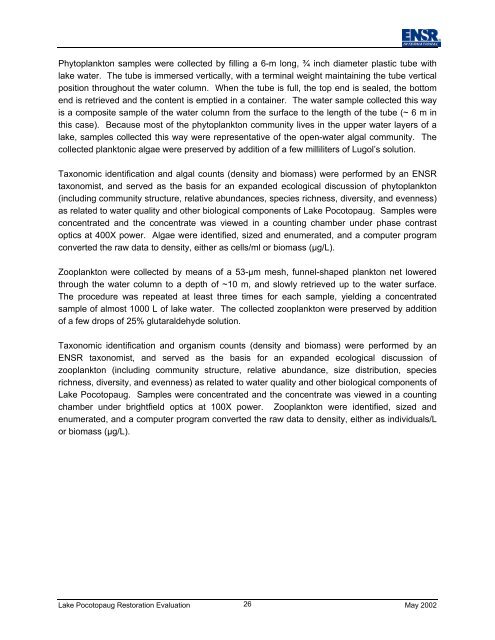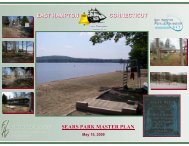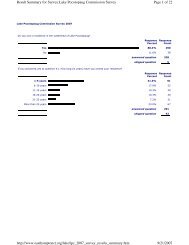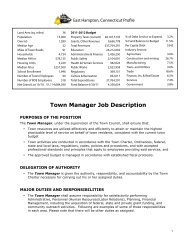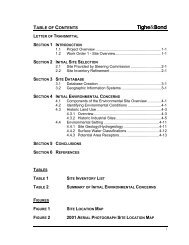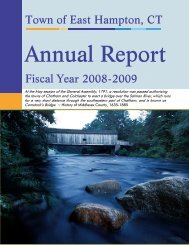Lake Pocotopaug Lake and Watershed Restoration Evaluation ...
Lake Pocotopaug Lake and Watershed Restoration Evaluation ...
Lake Pocotopaug Lake and Watershed Restoration Evaluation ...
You also want an ePaper? Increase the reach of your titles
YUMPU automatically turns print PDFs into web optimized ePapers that Google loves.
Phytoplankton samples were collected by filling a 6-m long, ¾ inch diameter plastic tube withlake water. The tube is immersed vertically, with a terminal weight maintaining the tube verticalposition throughout the water column. When the tube is full, the top end is sealed, the bottomend is retrieved <strong>and</strong> the content is emptied in a container. The water sample collected this wayis a composite sample of the water column from the surface to the length of the tube (~ 6 m inthis case). Because most of the phytoplankton community lives in the upper water layers of alake, samples collected this way were representative of the open-water algal community. Thecollected planktonic algae were preserved by addition of a few milliliters of Lugol’s solution.Taxonomic identification <strong>and</strong> algal counts (density <strong>and</strong> biomass) were performed by an ENSRtaxonomist, <strong>and</strong> served as the basis for an exp<strong>and</strong>ed ecological discussion of phytoplankton(including community structure, relative abundances, species richness, diversity, <strong>and</strong> evenness)as related to water quality <strong>and</strong> other biological components of <strong>Lake</strong> <strong>Pocotopaug</strong>. Samples wereconcentrated <strong>and</strong> the concentrate was viewed in a counting chamber under phase contrastoptics at 400X power. Algae were identified, sized <strong>and</strong> enumerated, <strong>and</strong> a computer programconverted the raw data to density, either as cells/ml or biomass (µg/L).Zooplankton were collected by means of a 53-µm mesh, funnel-shaped plankton net loweredthrough the water column to a depth of ~10 m, <strong>and</strong> slowly retrieved up to the water surface.The procedure was repeated at least three times for each sample, yielding a concentratedsample of almost 1000 L of lake water. The collected zooplankton were preserved by additionof a few drops of 25% glutaraldehyde solution.Taxonomic identification <strong>and</strong> organism counts (density <strong>and</strong> biomass) were performed by anENSR taxonomist, <strong>and</strong> served as the basis for an exp<strong>and</strong>ed ecological discussion ofzooplankton (including community structure, relative abundance, size distribution, speciesrichness, diversity, <strong>and</strong> evenness) as related to water quality <strong>and</strong> other biological components of<strong>Lake</strong> <strong>Pocotopaug</strong>. Samples were concentrated <strong>and</strong> the concentrate was viewed in a countingchamber under brightfield optics at 100X power. Zooplankton were identified, sized <strong>and</strong>enumerated, <strong>and</strong> a computer program converted the raw data to density, either as individuals/Lor biomass (µg/L).<strong>Lake</strong> <strong>Pocotopaug</strong> <strong>Restoration</strong> <strong>Evaluation</strong> 26May 2002


